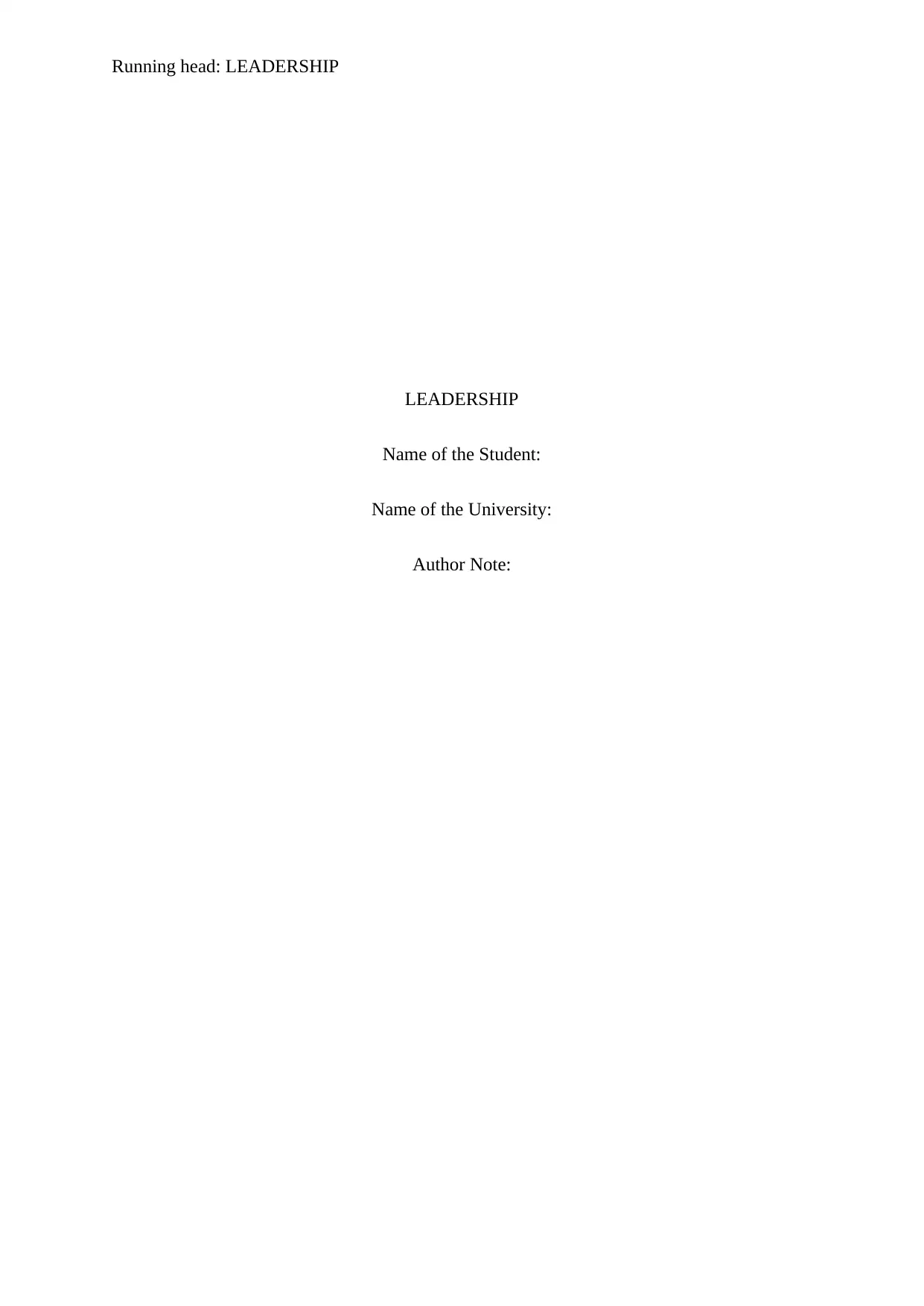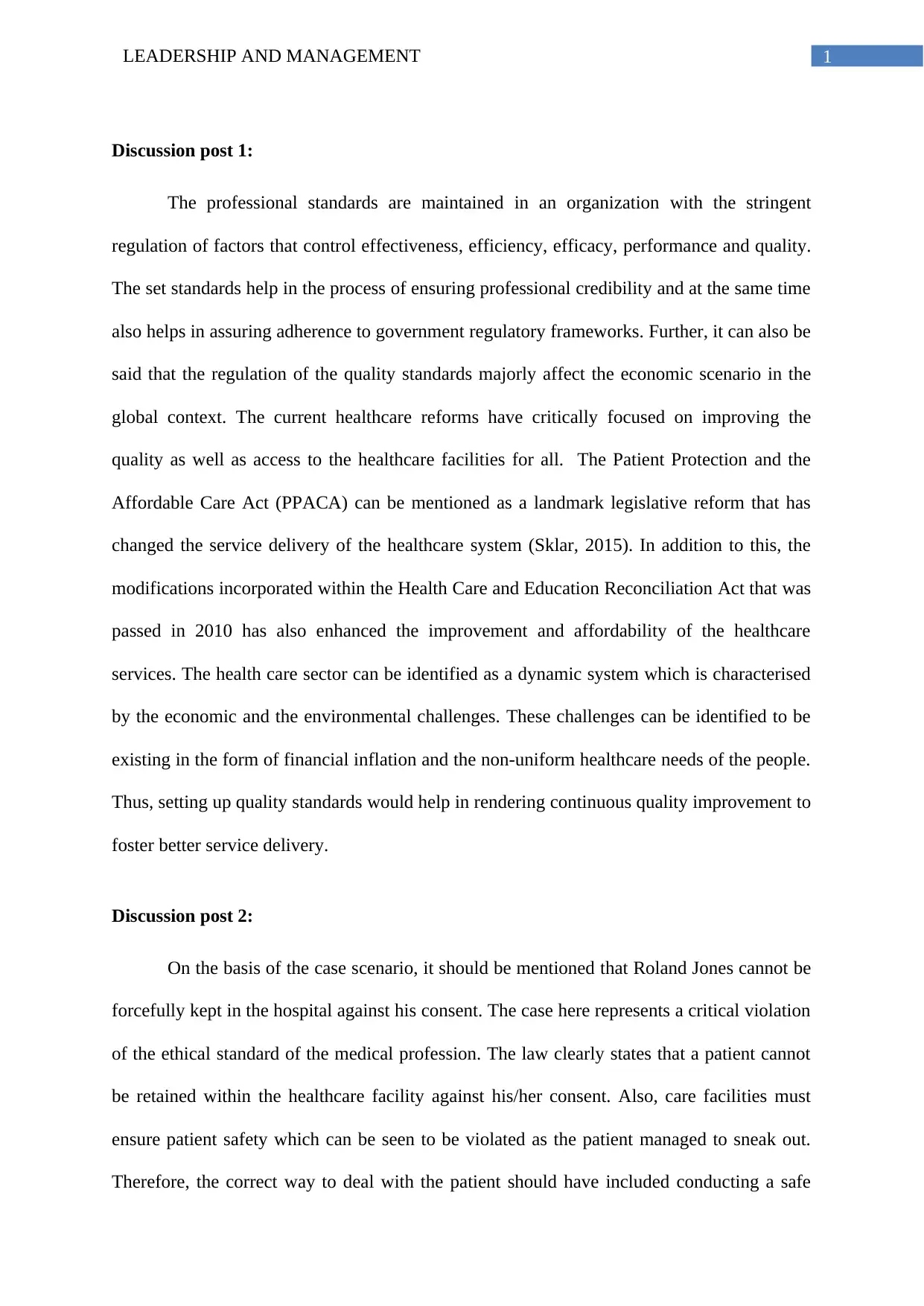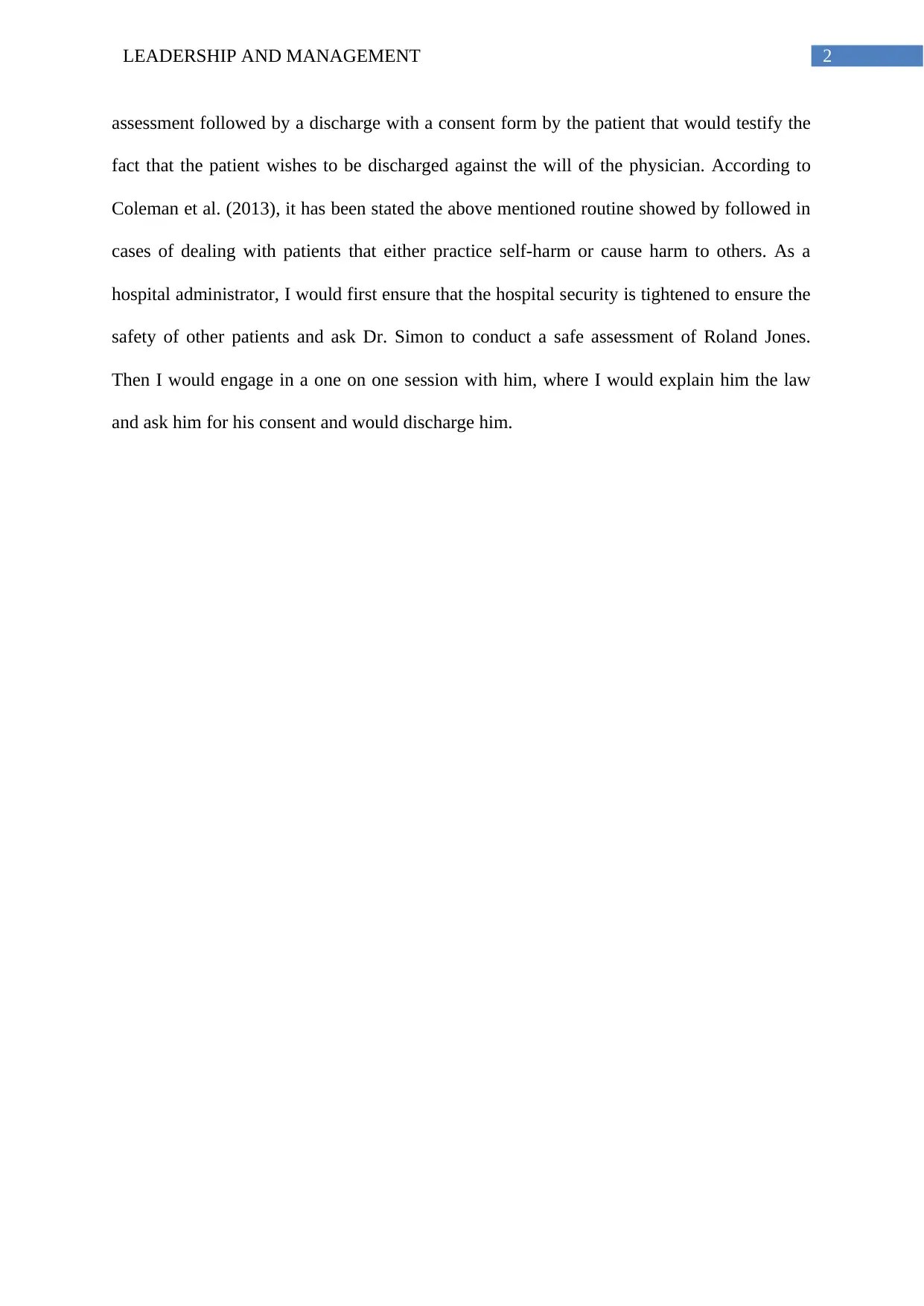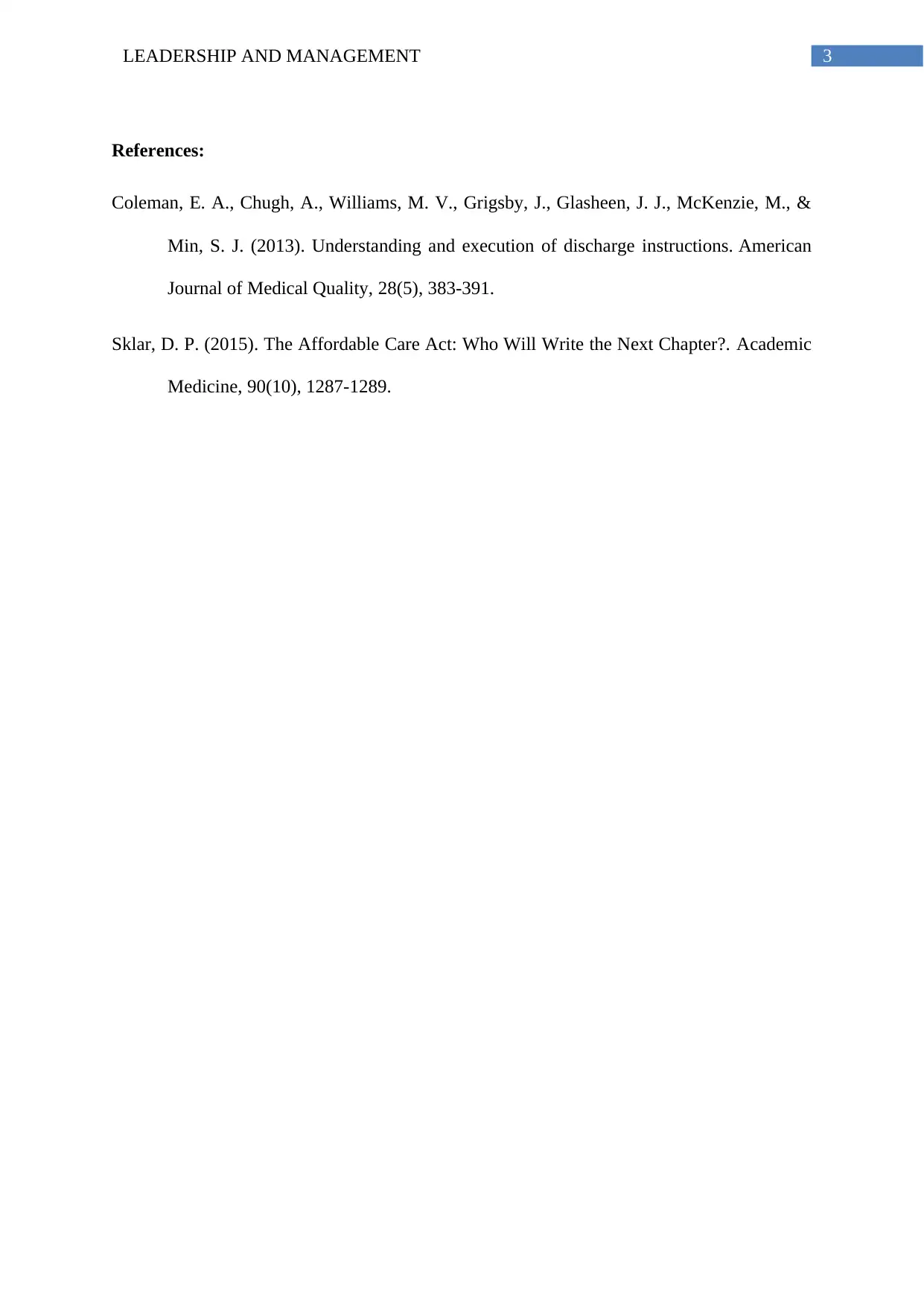Leadership and Management in Healthcare: Unit 8 Discussion
VerifiedAdded on 2023/04/26
|4
|593
|144
Discussion Board Post
AI Summary
This discussion post addresses two key topics related to leadership and management in healthcare. The first part explores the importance of measurement and developing criteria for efficiency, effectiveness, performance, efficacy, and quality within health organizations. The author emphasizes how these criteria are crucial for health leader evaluation, linking them to professional standards and government regulations, including the impact of the Patient Protection and Affordable Care Act. The second part presents a case study involving a patient, Mr. Roland Jones, with a history of mental illness, and discusses the ethical and legal considerations of patient restraint. The author argues against forceful retention of the patient, highlighting the violation of ethical standards and patient rights, and outlines a recommended course of action that includes a safe assessment, patient consent, and adherence to legal guidelines. References to relevant literature are included to support the arguments presented.
1 out of 4










![[object Object]](/_next/static/media/star-bottom.7253800d.svg)